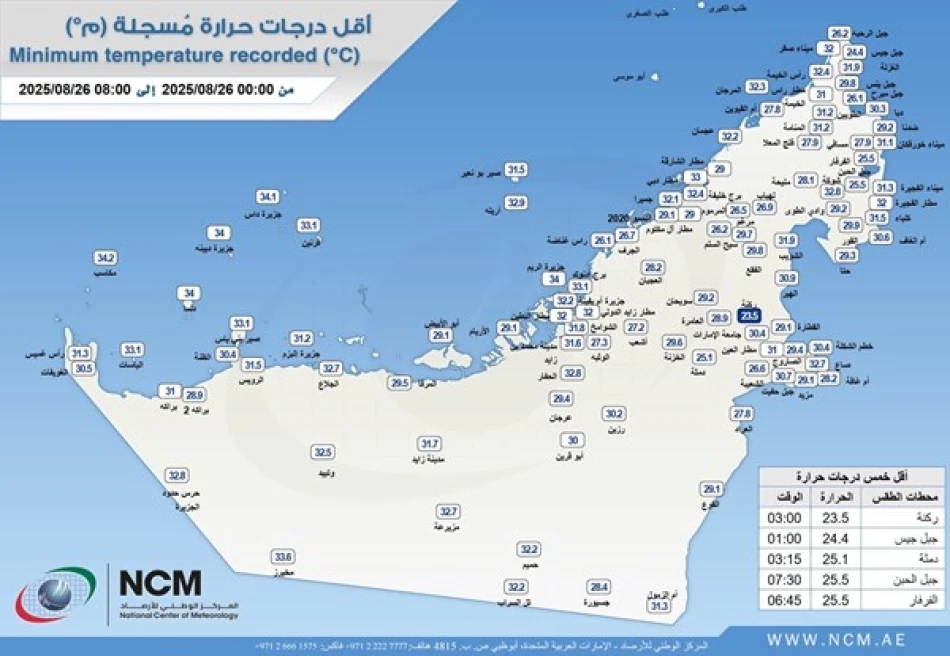
UAE Met Office Reveals Lowest Temperature in the Nation
UAE Records Remarkably High Winter Low of 23.5°C, Highlighting Climate Shift
The UAE's National Center of Meteorology recorded a minimum temperature of 23.5°C (74.3°F) on Tuesday morning in Rakna, Al Ain—a reading that underscores the country's increasingly warm climate patterns and challenges traditional notions of winter cooling in the Arabian Peninsula.
Record-Breaking Morning Temperature
At 3:00 AM local time on Tuesday, the weather monitoring station in Rakna recorded what the National Center of Meteorology identified as the country's lowest temperature for the day. At 23.5°C, this minimum temperature is notably warm by global standards, particularly for what should be the UAE's coolest season.
The Al Ain region, where the reading was taken, typically experiences the UAE's most moderate temperatures due to its inland location and slightly higher elevation compared to coastal areas like Dubai and Abu Dhabi.
Climate Context and Regional Patterns
Winter Warming Trends
This temperature reading reflects broader climate trends affecting the Gulf region. Traditional winter months in the UAE historically brought relief from summer's extreme heat, with temperatures often dropping into the high teens Celsius in desert areas during early morning hours.
The persistence of temperatures above 23°C during the coolest part of the day suggests that even the UAE's mildest season is becoming progressively warmer, aligning with global climate data showing accelerated warming in arid regions.
Regional Climate Implications
The Arabian Peninsula has been experiencing some of the world's fastest temperature increases, with implications extending beyond daily comfort. Sustained higher minimum temperatures affect everything from energy consumption patterns to agricultural planning and urban development strategies.
Compared to other Gulf states, the UAE's climate monitoring reveals similar trends, with Kuwait, Saudi Arabia, and Qatar all reporting elevated baseline temperatures during traditional cooling periods.
Economic and Infrastructure Impact
Higher minimum temperatures translate directly into increased energy demand, as air conditioning systems rarely get respite even during nighttime hours. This sustained cooling demand affects both residential and commercial energy costs, influencing everything from household budgets to industrial planning.
For the UAE's ambitious sustainability goals, including its net-zero by 2050 commitment, these temperature patterns highlight the urgency of renewable energy transitions and energy efficiency improvements across all sectors.
Looking Ahead
Such temperature readings serve as real-time indicators of climate adaptation challenges facing Gulf nations. The UAE's investment in climate monitoring infrastructure and weather forecasting capabilities becomes increasingly critical as traditional seasonal patterns shift, affecting everything from tourism planning to construction scheduling and public health preparedness.
Most Viewed News

 Layla Al Mansoori
Layla Al Mansoori






